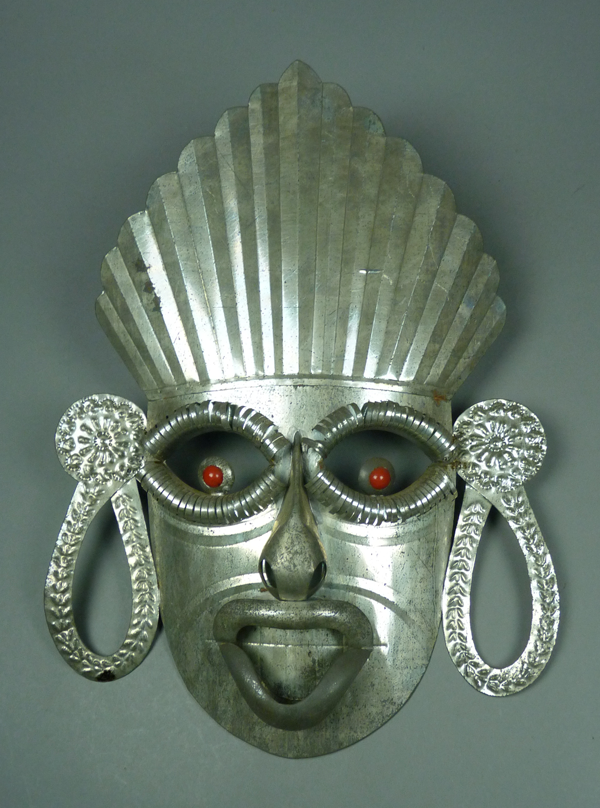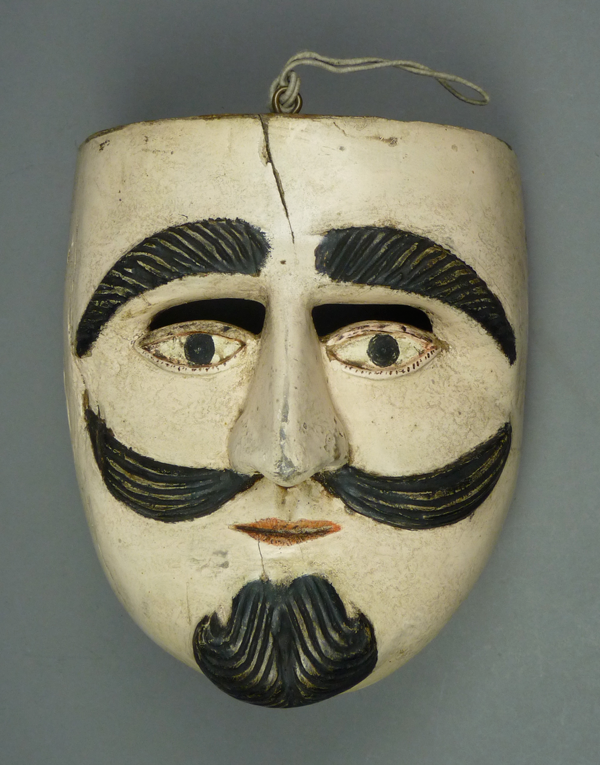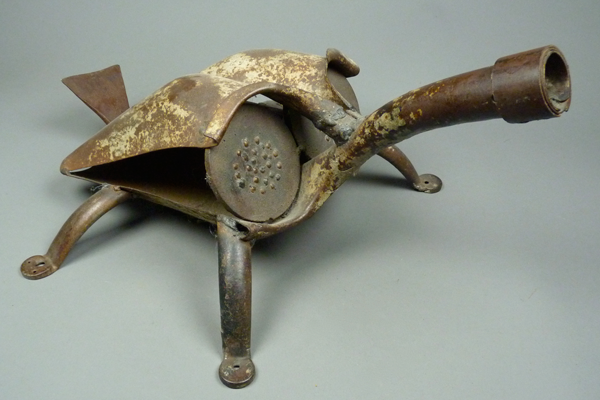Taxco, a Mexican city in the state of Guerrero, is well known as a center for the making of jewelry. By the 1950s it had also become the source for tin masks that were openly made and marketed for tourists. After two posts about traditional dance masks that were found on EBay™, I thought I would share some tin tourist masks from the same source. Because I have long been interested in tinsmithing, I collected these masks as folk art. Here is a typical example.
This mask is 16 inches tall and 12 inches wide. It is constructed from a number of typical elements, including the face and applied features such as the ears, and/or earrings, nose, lips, headdress, and glass marbles for the eyes.




